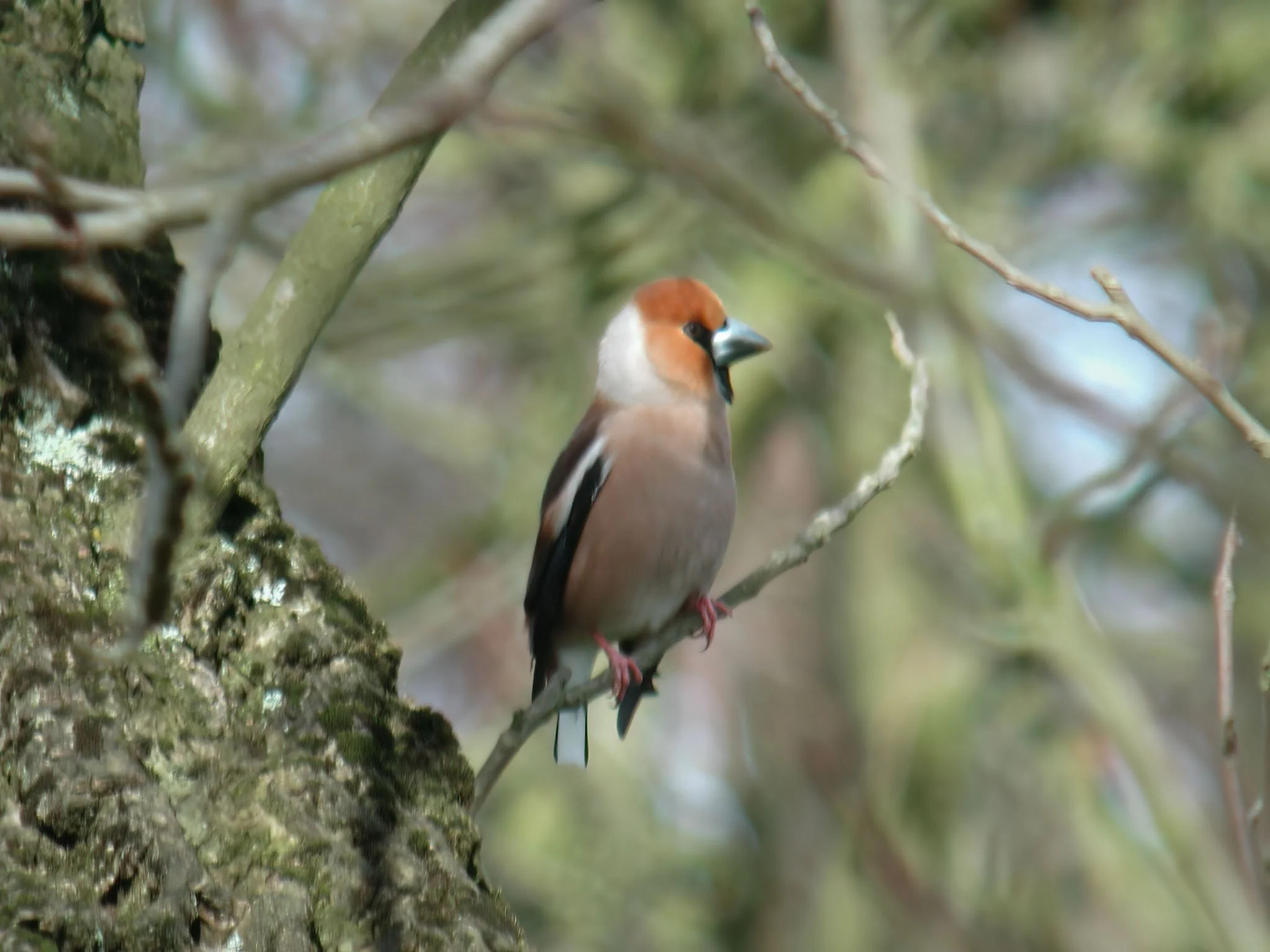Hawfinches
I still remember my first Hawfinch. On July 5th 1970 still not at an age to be able to drive and definitely unable to own a vehicle, my parents took my on one of our Sunday drives to the area of Pelham’s Pillar Woods, striclty private so any birding had to be from adjacent roads. We parked for a picnic on the triangle of grass and tarmac between Caistor Road and Cabourne Road at Audleby Top. Suddenly a bird landed next to a puddle by the car - a stunning Hawfinch unmistakable and unforgettable. I have driven past that spot 100’s of times since and walked those woods but never seen another Hawfinch there. Indeed it was March 1974 before I saw another Hawfinch at East Wretham Heath while studying at UEA. That bird was eclipsed by a flock of 30+ on January 24th 1975 and my highest ever count came from the same spot on April 3rd 1977 when there were 50+ there.
On April 16th 1983 while walking round Far Ings I put up a Hawfinch from a grassy spit between two reedbeds and this remained my only local patch record until the invasion of 2014 when one flew west on September 28th. In the 1980’s indeed through to 2004 or thereabouts a small breeding population was located in the woods east of Scunthorpe and these provided annual encounters with up to 10 birds and I even found a nest in Kingsway Woods in the crown of a Hawthorn only 20 feet up by a busy car park. I managed some pretty dodgy digi-scoped images of some of the birds in 2004 and 2006 below - but my image gallery was to say the least lacking in quality.
Male Hawfinch digi-scoped with Swaro scope and Nikon Coolpix E880 a 3MP camera 2004
Hawfinches feeding on the ground under yew trees February 2006
Then along came the autumn of 2017 and a major invasion of continental / Scandinavian Hawfinches into Britain. Staking out the migratory corridor of Barton Pits I managed to see one heading west on October 25th and a party of five heading the same way on the 27th. The following winter the Scawby Park - Forest Pines yew complex produced record numbers with my personal peak being 49 on February 27th 2018 with 45+ on March 2018.
Hawfinch Forest Pines November 2017
Hawfinch flock January 2018
male Hawfinch January 2018
Hawfinches January 2018
male Hawfinch January 2018
Floack of Hawfinches feeding on the ground under yew trees March 2018
female Hawfinch feeding under yews March 2018
Fast forward to 2024, with none seen in the interim and a calling Hawfinch flies south-west over my garden early on October 29th. With others being reported and a mini influx akin to 2017 I have a look at the favoured site and find five on November 6th but they are very flighty and I don’t even see one perched. Returning on 18th and there are at least 11 and I finally get a few images including a couple feeding in a yew next to a beech with its golden leaves forming a great backdrop.
male Hawfinch in yew November 18th 2024
Hawfinch hiding in Larch tree
male Hawfinch in yew
over ensuing days I go back when the weather looks good ie with light or no wind and sunny but mainly they are elusive and flighty and although they can be feeding close by in a yew they are typically hidden from view and even when perched high in a beech or larch they have a habit of always being behind whatever branches are available.
They seem to love to be high up in beech trees
all images with the 200-800 lens at max power and still small in the frame
adult males seem to be in the minority
crunching the seed? of the yew not the berries
Even when you see them fly up into a tree, oak here, they just seem to disappear and they are well camouflaged in the autumnal tree canopy
a bit easier to see in the top of a larch
while odd birds perch on top of the larch trees others disappear into the morass of twigs
even when close it is possible to hide behind a minimalist yew branch
adult female in a beech
another adult female using criteria in the new ID Handbook of European Birds
I have been trying to get some flight shots but as with all passerines its not easy as they are quite small and speedy but some of my attempts are bordering on acceptable record shots
an adult male with nice broad white tail feather tips
the flashing white wing bars on upper and underside are distinctive
and my best shots so far this winter - here an adult female
an adult male in yew
and an adult male in a yew with the backdrop of the golden beech leaves






























